Is Tarragona worth visiting? Yes, do this as a day trip or longer stay exploring the region
Tarragon, Spain located just under an hour south of Barcelona and located right on the coastline of the Costa Dauarada and the capital city in the region. I visited this Roman inspired city on a day trip from Barcelona and enjoyed an entire day exploring all the main attractions and cool historic, cultural and gorgeous attractions and landmarks in town. Located in the northwest coastal areas of the Catalonia region of Spain, Tarragona is about 62 miles away from Barcelona and makes an easy day trip by train or bus.
The gorgeous coastline draws you into the heart of the city, but the city’s historic and cultural center is filled with treasures worth visiting starting with all the Roman ruins and impressive architecture you’ll find throughout the city. Along with the old town appeal, there’s also the cooler and more cosmopolitan city center which lies just outside the old town walls and is also fun to explore, grab a bite to eat, check out the public markets or hang out in some of the popular squares in town.
I found Tarragona an easy day trip from Barcelona, but to really enjoy the city more at an easier pace and explore all the wonderful attractions, I would recommend staying overnight or even the weekend to really be able to see more and experience all the city has to offer, and it really does offer so much to see and do.
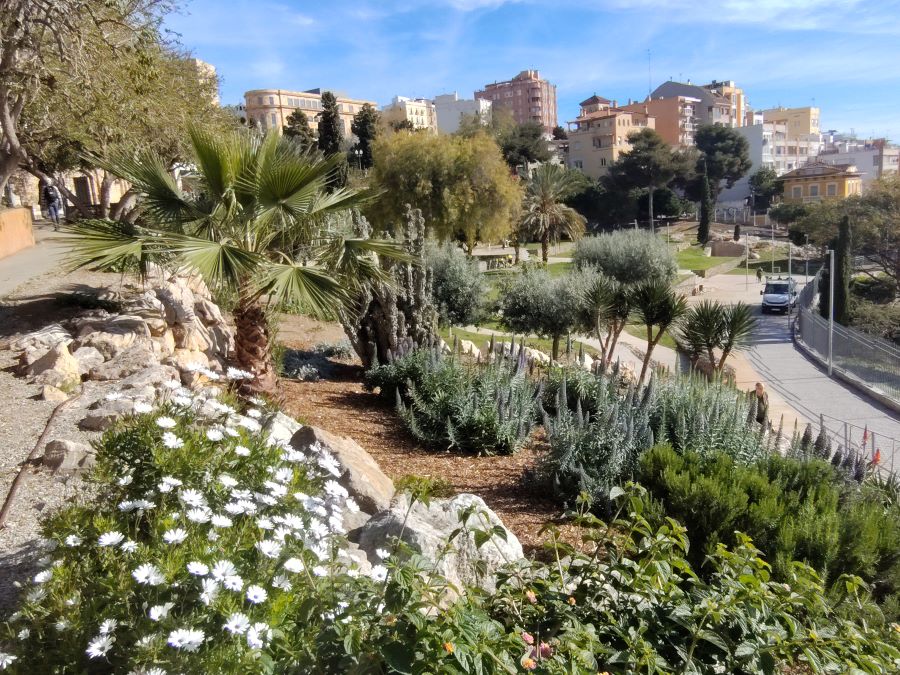
A little background and history on Tarragona
Tarragona, located in northeastern Spain, is one of the country’s oldest cities, with a history stretching back over two thousand years. Originally founded by the Iberians around the 5th century BC, Tarragona rose to prominence when it became the Roman colony of *Tarraco* in 218 BC. As the capital of the Roman province of Hispania Citerior, and later Hispania Tarraconensis, the city flourished under Roman rule, becoming a bustling center filled with impressive structures like forums, amphitheaters, and aqueducts. Today, these Roman ruins, which have earned the city UNESCO World Heritage status, are a major draw for visitors.
Over the centuries, Tarragona experienced various periods of control, from the Visigoths to the Moors, before being reconquered by Christian forces in the 12th century. While it never regained its former prominence after the rise of Barcelona, Tarragona remained an important port and ecclesiastical center. The city’s rich historical architecture, including its medieval cathedral and ancient Roman sites, blends seamlessly with modern Catalan culture. Tarragona continues to thrive as a vibrant Mediterranean destination, known for its annual Santa Tecla festival and the enduring charm of its historic quarter with Roman and Medieval origins.
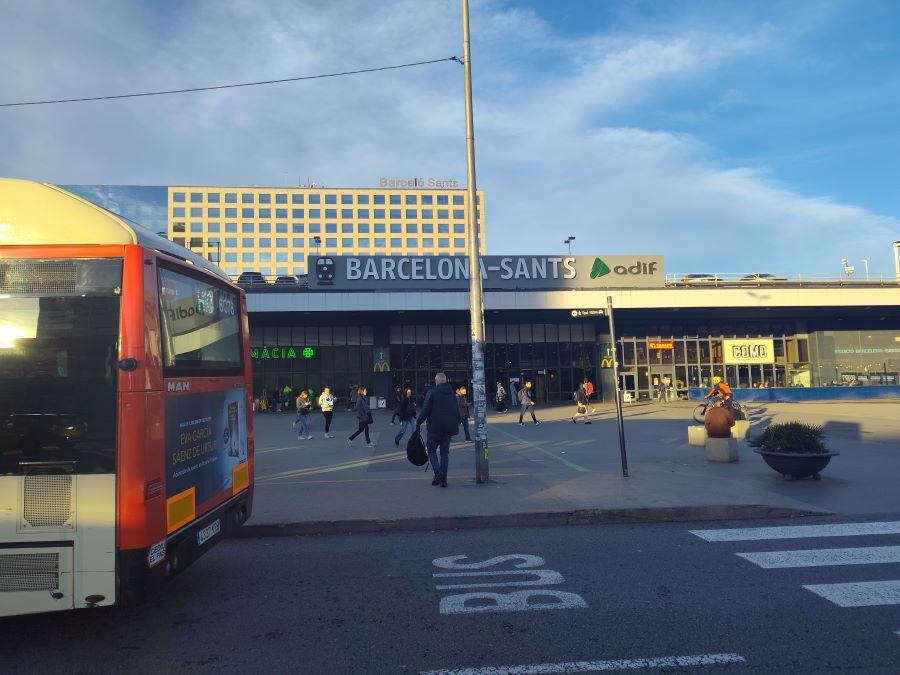
How to get to Tarragona from Barcelona
You can easily get to Tarragona from Barcelona by bus, car or train service which run regularly, here’s a breakdown of each way to travel. There is also share car travel to both cities, but this definitely is not as consistent as the other top three choices.
Here’s how to get to Tarragona depending on your time and budget:
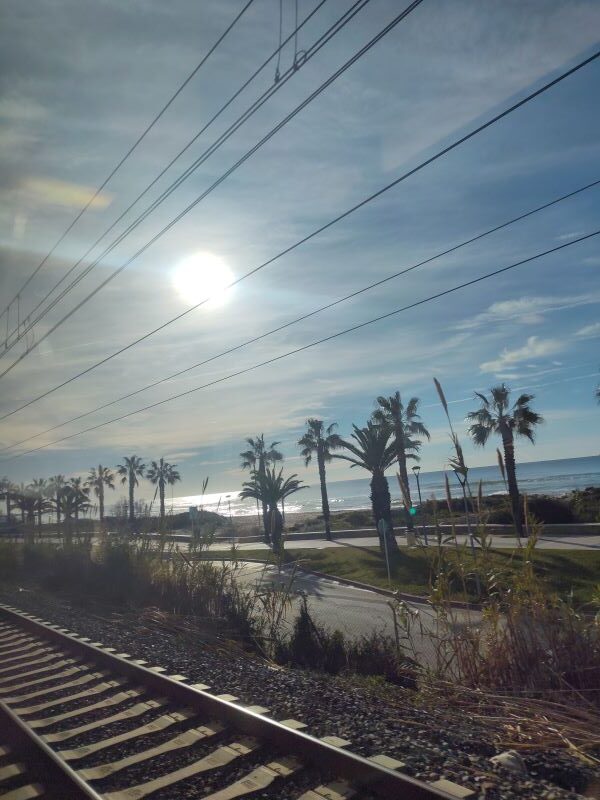
Travel by train service
One of the most popular and convenient ways to reach Tarragona is by train. You can take a high-speed AVE or Avant train from Barcelona Sants station, which gets you to Tarragona in about 35-45 minutes. There are also regional trains (Rodalies) that take around 1 hour and 15 minutes, offering a more budget-friendly option. Trains run frequently throughout the day, making this a flexible choice.
Travel by bus service
Another option is to take a bus from Barcelona to Tarragona. Buses depart from Barcelona’s Estació del Nord and typically take about 1 hour and 30 minutes to reach Tarragona. This can be a good option if you’re staying closer to the bus station or prefer a direct route. Check out routes and prices to and from Tarragona here for more information.
Travel by car
If you prefer to drive, Tarragona is about 100 kilometers southwest of Barcelona, and the journey takes around 1 hour by car. You can take the AP-7 motorway, which is a toll road, or the coastal C-32 road if you prefer a more scenic route. Renting a car gives you the flexibility to explore the surrounding areas at your own pace.
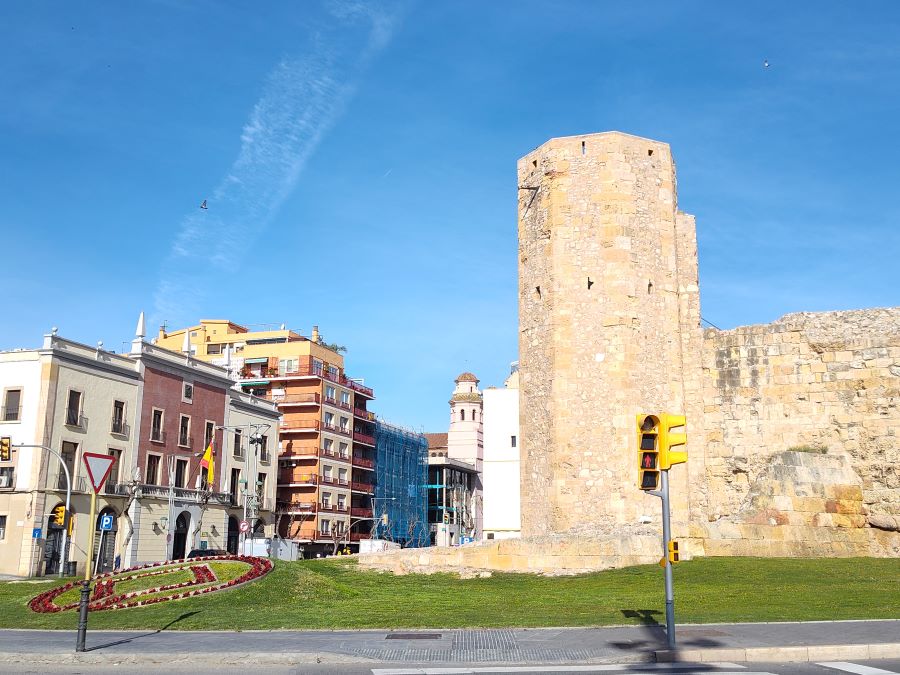
Top things to do and see at Tarragona
Here are the top things and places to visit at Tarragona, the regional capital of the Costa Dauarada From visiting the Roman attractions and ruins, the medieval walled city to the more modern areas that are also fun to explore, the city is filled with life, activities and fun things to explore.
Roman ruins in Tarragona
There are so many fantastic Roman ruins to visit around Tarragona for those that love exploring the ancient sites of this city. the entire Roman ruins is part of the UNESCO World Heritage Site that includes all of the Tarragona’s Roman remains from the famous amphitheater, to the circus and the main forum downtown.
We start with a visit to the Roman Amphitheater below.
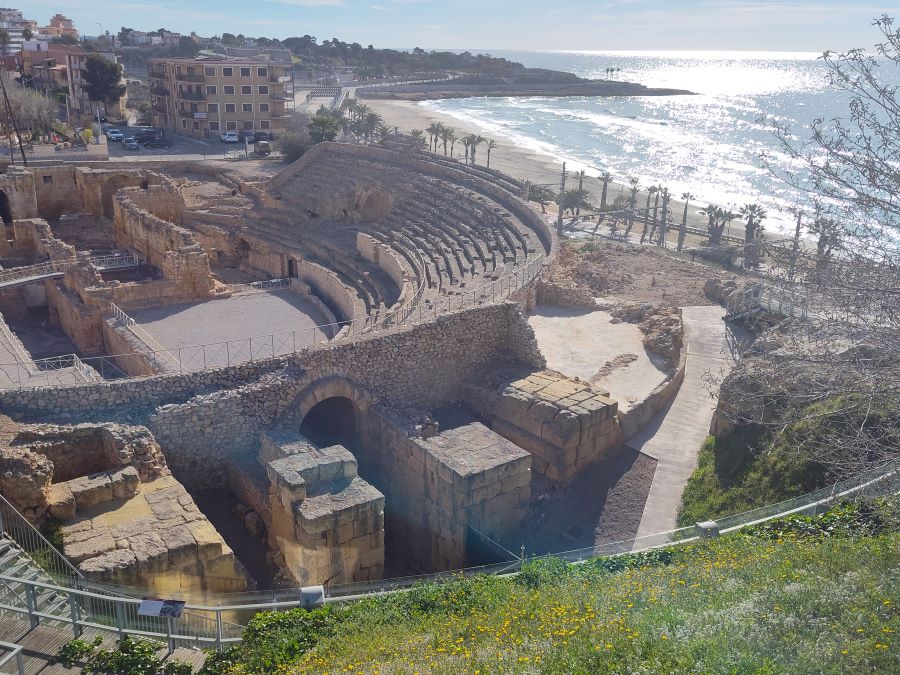
Roman Amphitheater of Tarraco
The Roman Amphitheater of Tarragona, built in the 2nd century AD, is a prominent symbol of the city’s ancient Roman heritage. Situated on a hillside with stunning views of the Mediterranean Sea, it served as a venue for gladiator fights, animal hunts, and public executions, accommodating up to 15,000 spectators. Despite the passage of time, significant portions of the amphitheater, including the seating, arena, and underground areas, remain well-preserved, offering a glimpse into the grandeur of *Tarraco* during the Roman era.
Adding to its historical significance, the amphitheater also features remnants from later periods. A Visigoth church was constructed within its grounds in the 6th century, followed by a Romanesque church in the 12th century, showcasing the site’s continuous use over centuries. Today, as a UNESCO World Heritage Site, the amphitheater attracts visitors worldwide, who come to explore its ancient architecture and experience the rich layers of Tarragona’s history.
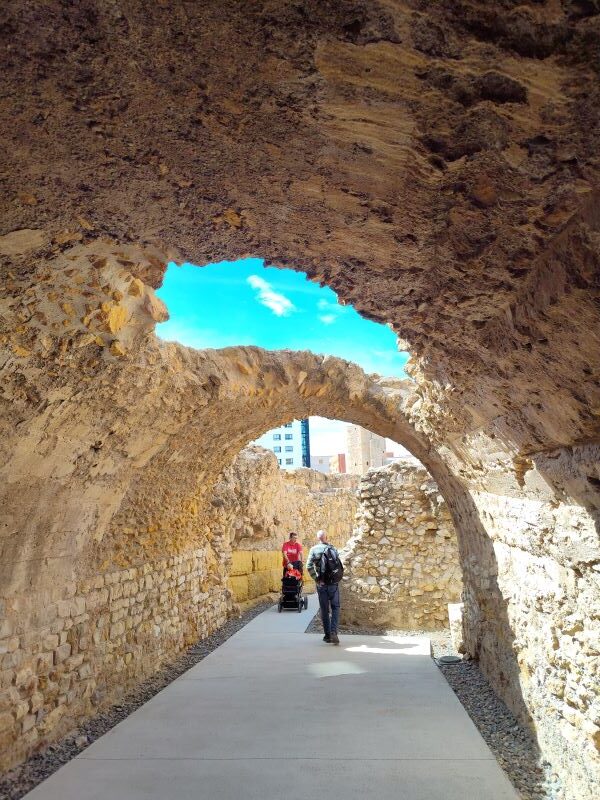
The Circus of Tarragona or Circ Romà de Tarragona
The Circus of Tarragona, or *Circ Romà de Tarragona*, was a significant Roman site used for chariot races and public spectacles, built in the 1st century AD during *Tarraco*’s time as the capital of the Roman province of Hispania Citerior. Designed in the traditional Roman style, it featured a long, rectangular track surrounded by tiered seating and could hold around 25,000 spectators. The arena was impressive in size, with a central barrier around which the chariots raced, and seating arranged according to social status, with the best views reserved for the elite.
What makes the Circus of Tarragona particularly unique is its integration into the modern city. Unlike many ancient ruins, the remains of the circus are embedded within the historic quarter of Tarragona, with original tunnels and vaults still accessible today. Visitors can explore these remains and gain insights into the city’s Roman past through access points like the Praetorian Tower, which offers views of the ruins and the surrounding area. The circus is part of Tarragona’s UNESCO World Heritage Site, highlighting its importance in Roman history and its enduring architectural significance.
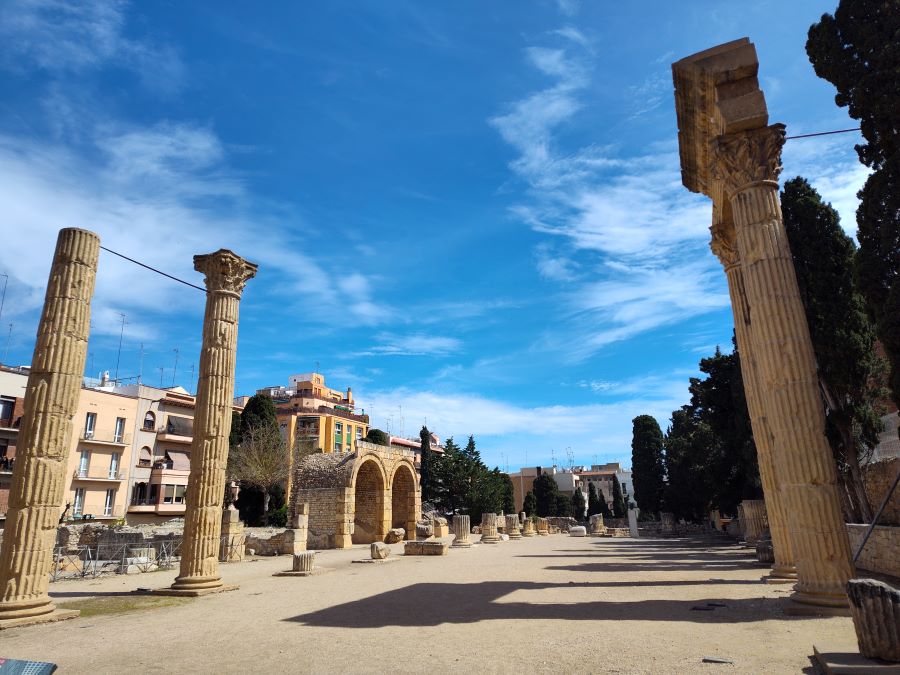
Fòrum colonial de Tarraco
The *Fòrum Colonial de Tarraco* was the central hub of ancient *Tarraco* (modern-day Tarragona) during the Roman period, established in the 1st century BC. It served as the city’s political, commercial, and social center, surrounded by key structures like temples, basilicas, and administrative buildings. The forum was divided into two main areas: the *Fòrum Provincial* for provincial administration and the *Fòrum Colonial* for local civic life, featuring a rectangular plaza lined with porticos, shops, and spaces for public gatherings.
Today, the *Fòrum Colonial de Tarraco* is part of the UNESCO World Heritage Site that includes Tarragona’s Roman remains. Visitors can explore the site, where remnants of the original paving stones, building foundations, and fragments of columns and statues offer a glimpse into the grandeur and daily life of Roman *Tarraco*. Despite being partially preserved, the forum provides valuable insights into the city’s importance in the Roman Empire and its architectural legacy.
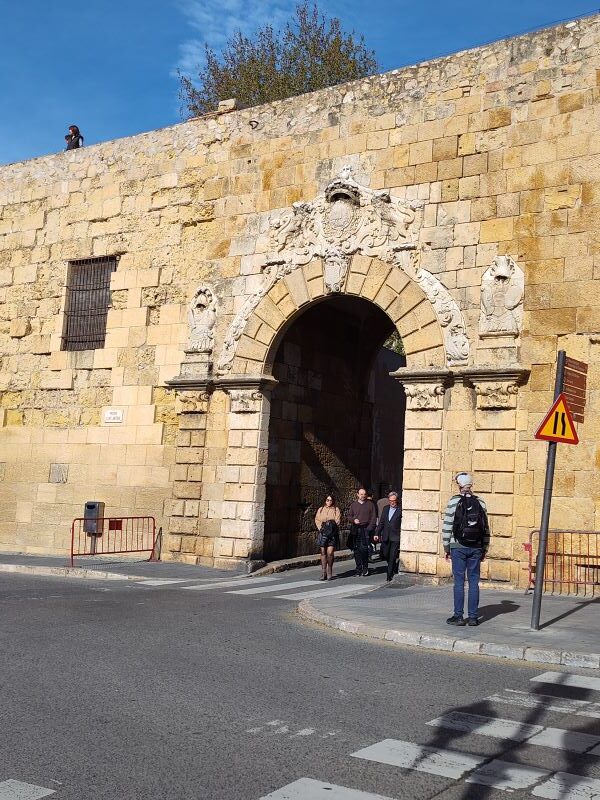
Medieval Old Town center of Tarragona
You’ll find the historic Medieval Old Town of Tarragona to be wonderfully intact and fun to explore he “Part Alta” section of the city. This includes:
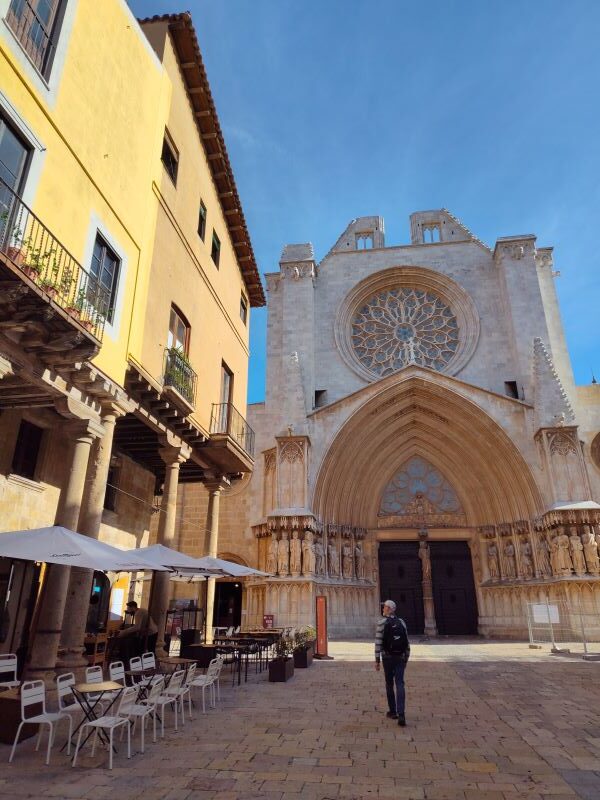
Tarragona Cathedral
The Tarragona Cathedral, or the *Cathedral of Saint Thecla*, is a striking example of Romanesque architecture with Gothic influences. Built over the ruins of a Roman temple, it boasts an impressive façade, a richly adorned interior, and a picturesque cloister with Romanesque columns. The bell tower offers panoramic views of the city and beyond.
Plaça del Rei
This historic square is often considered the center of the medieval district. It is surrounded by notable buildings, including the former Royal Palace. The square is also home to the *Museu Nacional Arqueològic de Tarragona* (National Archaeological Museum of Tarragona), which features a significant collection of Roman artifacts. The area is perfect for appreciating medieval architecture and enjoying the lively atmosphere of local cafes and shops.
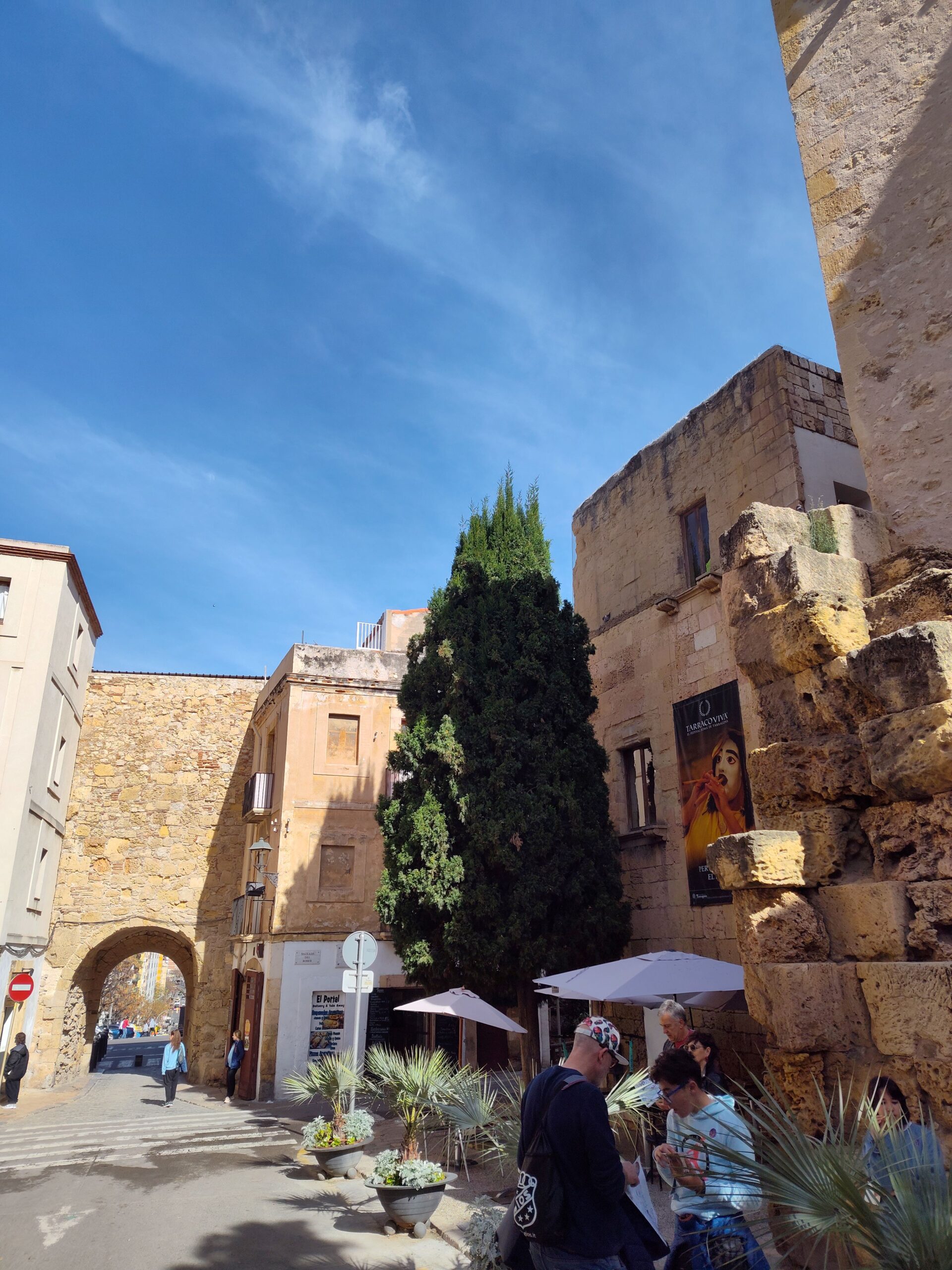
Roman Walls of the old own of Tarragona
Roman Walls
The ancient Roman walls encircling the Old Town are a testament to Tarragona’s historical importance. Constructed during the Roman Empire, these walls include original towers and gates, such as the *Porta de San Antonio* and the *Porta de les Comtes*. Walking along the walls offers a glimpse into the city’s defensive past and provides excellent views of the surrounding area. The walled city was incorporated into the medieval parts of the city and built out with buildings, housing and other uses into the walled city of the medieval portion of the city.
Plaça de la Font
Plaça de la Font is a vibrant square known for its lively atmosphere and historic charm. Surrounded by restaurants and bars, it’s a great spot to relax and soak up the local vibe. The square features the *Font del Centenari*, a decorative fountain celebrating Tarragona’s centenary.
Bishop’s Palace
Located next to the cathedral, the Bishop’s Palace was once the residence of the city’s bishop. Its architecture reflects various historical styles and periods, highlighting the rich history of the medieval church in Tarragona. Although the interior is not always open to visitors, the exterior is worth admiring for its historical significance
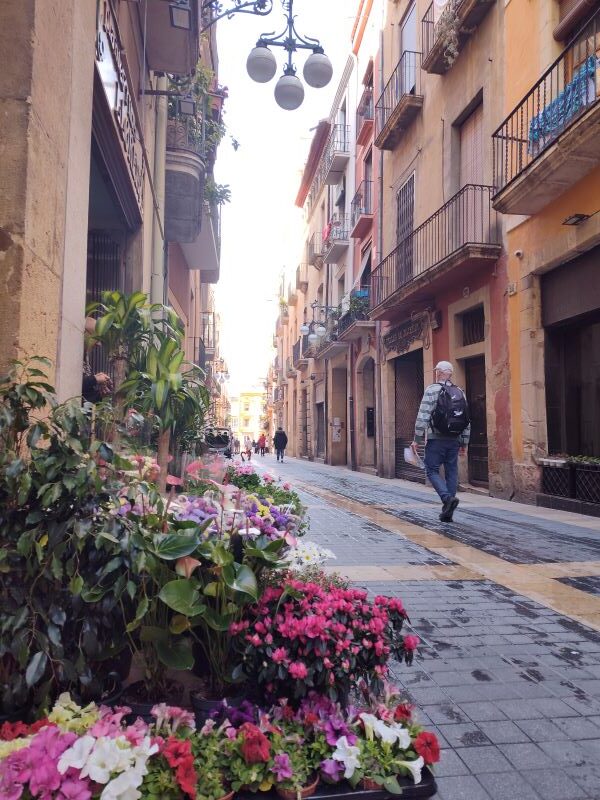
Streets of Part Alta
The small narrow streets of Part Alta give a fantastic look into the medieval history and architecture through its narrow streets, historic buildings, and vibrant squares. It’s easy to just wander around or pick up a tourist map from the visitor’s center so you can be more familiar with the various parts of the old city. I found walking through these old cobble streets to be fascinating and that they have transitioned into modern living, tourism and adapting to how locals live today.
Visit the new modern side of Tarragona
Exploring Tarragona’s modern side reveals a dynamic and vibrant contrast to its historic charm that is cool to explore and see the contrast of old and new. I found exploring the newer parts of the city to be just as fascinating and fun to explore with the main walking promenades, shopping venues, plazas and the main public market that is visited daily for what’s fresh and in season to prepare for the nights meal.
Here are some key spots to discover:
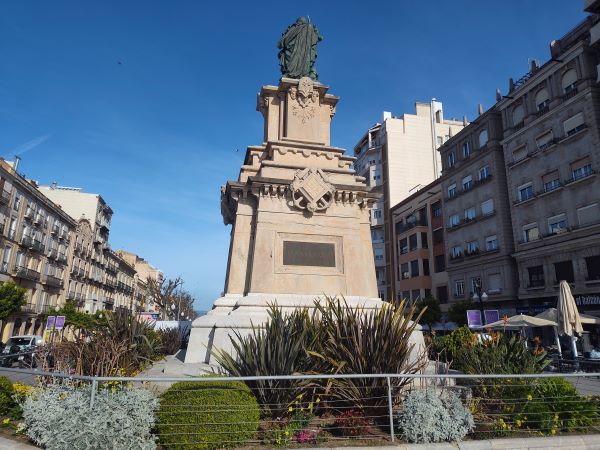
Rambla Nova
Rambla Nova is the city’s main thoroughfare, bustling with energy and contemporary life. This avenue is filled with shops, cafes, and restaurants, making it a lively place for strolling and shopping. At its end, you’ll find the *Balcony of the Mediterranean*, offering stunning panoramic views of the coast and sea.
Port of Tarragona
The Port of Tarragona is a thriving area reflecting the city’s modern maritime and commercial activities. You can walk along the waterfront, explore the marina, or visit the *Museu del Port*, which delves into the port’s history and significance in the city’s development.
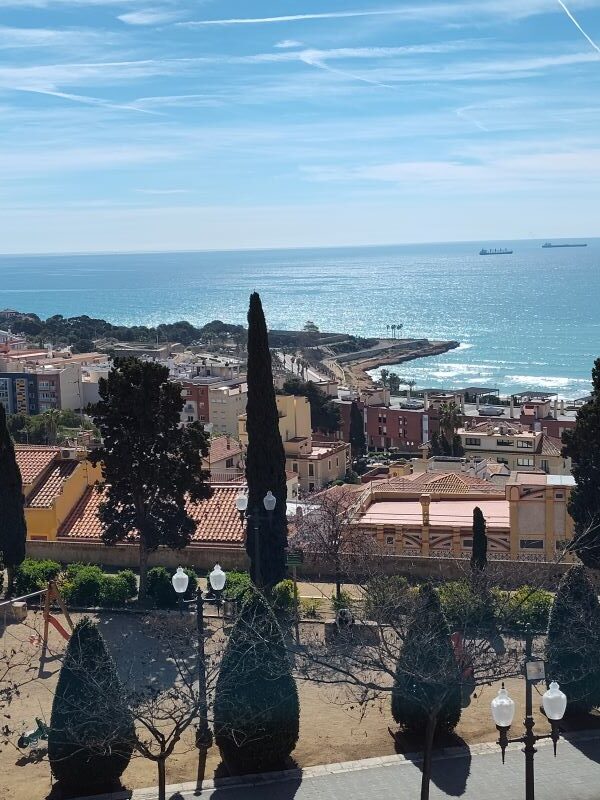
Mediterranean Balcony
At the end of Rambla Nova, the Mediterranean Balcony is a modern lookout spot providing sweeping views of Tarragona’s coastline. It’s an ideal place to take in the sea vistas and enjoy the fresh sea air.
Parc Central
Parc Central is a large urban park offering a green retreat in the city center. It features walking paths, playgrounds, and open spaces perfect for relaxation, picnics, and outdoor activities.
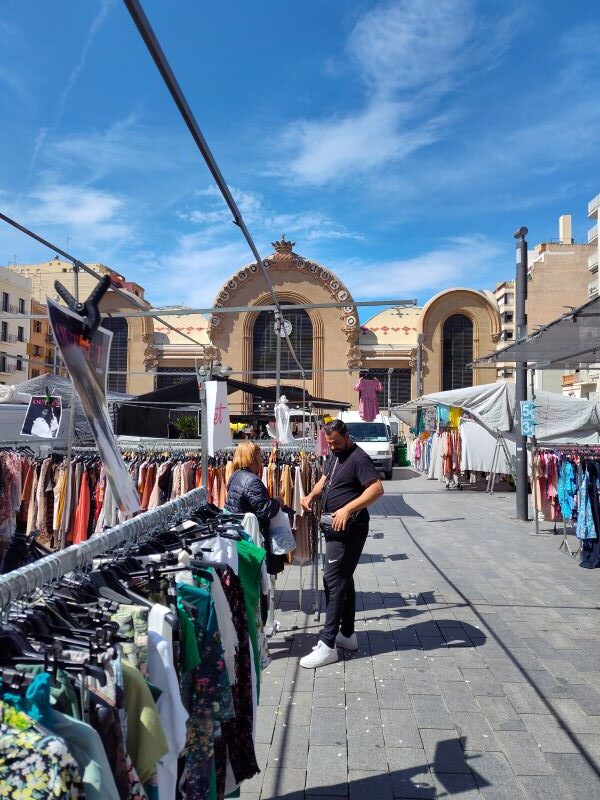
Tarragona central market
Located in the downtown business district the Tarragona central market is definitely the hub and pulse of the new part of the city. With a colorful market that happens both indoor and outdoors, the central market is a gathering place for locals to shop and share some of the days activities and chats.
Further Reading – check out these posts
Travel from Barcelona to Tarragona
Pin and save this for later
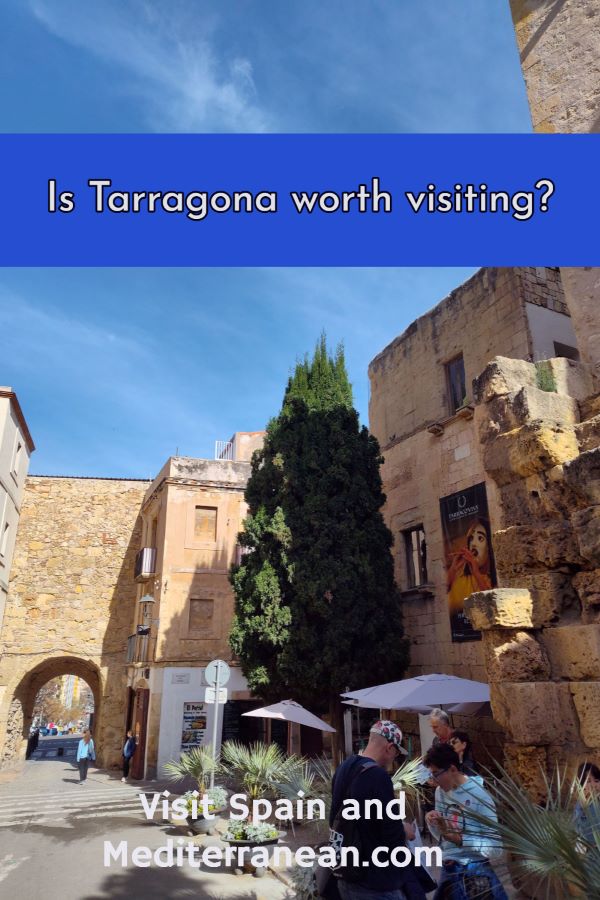
Conclusion to visiting Tarragona, Spain
Tarragona makes a fascinating day tour or longer visit to this region just south of Barcelona with so much history and culture combined. It’s relatively easy to get to by bus or train service and you’ll be right in the heart of all the ancient monuments, landmarks and magnificent architecture from past to present. Not to mention the spectacular beaches, port and amazing views you can see from above different vantage points from the city to the coastlines below.
Thanks for checking out this post on Visit Spain and Mediterranean, please do share the post with any of the social media channels around the post, thanks for visiting!
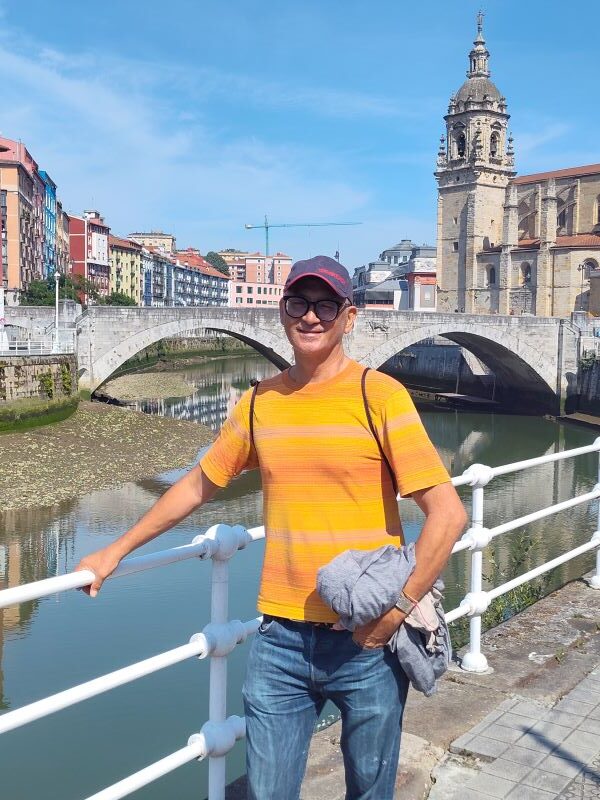
About author – Noel Morata
After relocating from the United States to Andalusia in 2024, I’ve made it my mission to discover every corner of Spain. Based just east of Granada, I’ve spent over 12 months exploring Andalusia province and the rest of Spain, including multiple extended visits to Granada throughout different seasons. My background in Spanish cultural studies and years of residence and exploring all of Spain have given me unique insight into the region’s historical significance, local customs, and culinary traditions.
I regularly update my guides with the latest information gathered through personal visits and relationships with local tourism officials, always seeking what’s new and exciting in each destination. As a self-proclaimed foodie, I’m passionate about discovering authentic local markets and regional specialties.
I love viisiting historic cities and Tarragona has so much wonderful history and culture from Roman times to the medieval time period and on to the more modern era and lifestyle. I share all my favorite places to visit here and love returning to see more new developments that happen here.
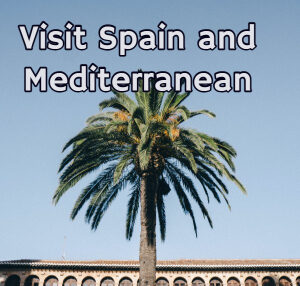
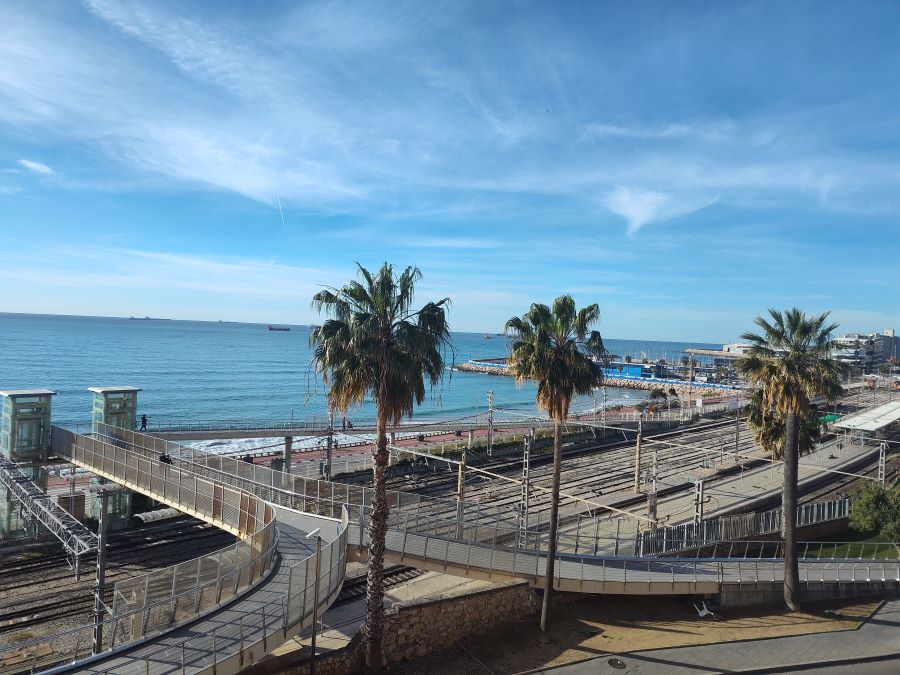
4 thoughts on “Is Tarragona worth visiting?”